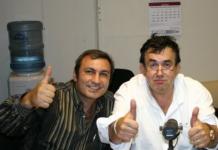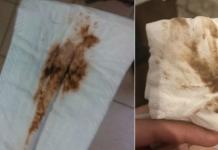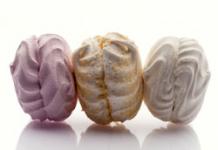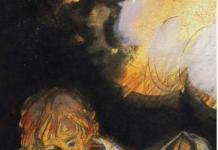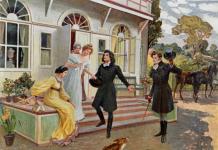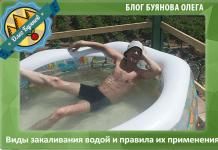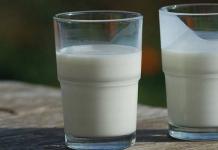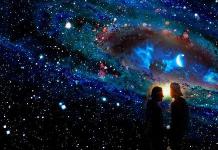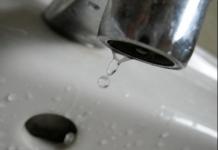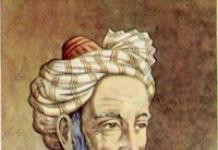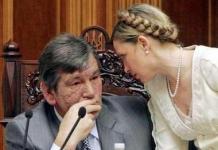Heart is the main organ of the human body. It, like a motor, supplies all organs and systems with nutrients and oxygen, which is necessary for the vital activity of cells.
But, as you know, nothing lasts forever, and the human motor can fail. It is about them that we will talk, because if there is pain in the heart, then the hemodynamics of the body is unstable.
What the heart hurts about: causes and origin of heart pain
 Pain in chest- one of the most important indicators of violations in the body. Such pains are found in various pathologies of the heart. It is impossible to say unequivocally “what the heart hurts about”, but, according to medical indications, pain in the heart area may appear due to the following reasons, which are divided into two large groups:
Pain in chest- one of the most important indicators of violations in the body. Such pains are found in various pathologies of the heart. It is impossible to say unequivocally “what the heart hurts about”, but, according to medical indications, pain in the heart area may appear due to the following reasons, which are divided into two large groups:
1. Violations of the functioning of the organ itself:
- insufficient nutrition of the heart muscles themselves;
- inflammatory process in the tissues of the body;
- metabolic disorders in the coronary arteries;
- a large load that causes changes in the organ itself (enlargement of the ventricles, loose closure of the valves).
2. Diseases not directly related to the heart, but giving pain syndrome to this area:
- pathology of the gastrointestinal tract (gastritis, ulcer);
- neuralgia - clamping of nerve endings in the spinal column, ribs;
- pathology of the lungs and bronchi;
- consequence of injury.
How to understand what hurts the heart?

As already found out, it can hurt in the chest area not only because of cardiac pathology. This is due to the fact that all internal organs are interconnected by nerve endings. To make sure that it is the heart that hurts, you need to contact a medical institution for examination and confirmation or refutation of the diagnosis.
The manifestation of heart pain directly depends on the reasons that provoked it, we will talk about the features of pain later. Such pain may be:
- pulling;
- tingling;
- aching;
- squeezing;
- cutting;
- with recoil in the hand, under the shoulder blade.
How the heart hurts: the main types of pain and symptoms
With angina pectoris, the patient complains of pain, as if someone stepped on his chest. Chest discomfort is described as a constricting feeling that interferes with breathing. It was this feeling that provoked in ancient times to call this disease angina pectoris.
It can be localized not only near the heart, but also give to the left arm, shoulder, neck, jaw. Basically, the pain syndrome appears suddenly, and it can be provoked by strong physical, emotional stress, eating, deep breathing. The duration of such pain is up to 15 minutes.
Heart pain in myocardial infarction
Myocardial infarction is an ischemic necrosis of the heart tissue:
- in the process (during an attack), necrotic areas appear on the myocardium, a sudden sharp pain appears with irradiation to the left arm and back;
- there is numbness of the limb;
- with a small area of necrosis, the patient feels burning and squeezing in the sternum, but can stand on his feet.
The insidiousness of the pathology lies in the fact that the symptoms may be completely absent. The patient only occasionally complains of discomfort in the chest.
With extensive tissue damage, a person loses consciousness and requires immediate resuscitation, followed by hospitalization.
Pain in the heart with pericarditis
Do not try to diagnose yourself, especially prescribe treatment for yourself. This should be done by a competent specialist, a cardiologist or a cardiac surgeon.
The symptoms of heart disease are similar to each other, so before making a diagnosis, you should undergo a thorough diagnosis.
One of the most important diagnostic methods is electrocardiogram. It can be carried out not only in an office with a special device, if necessary, an electrocardiogram is done:
- during physical activity treadmill test;
- indicators are written throughout the day - holter monitoring.
There are other ways to study the heart:
- echocardiography method- the muscle tissues of the heart, its valves are checked;
- phonocardiography method- heart murmurs are recorded;
- ultrasound method- the blood circulation in various cavities of the heart is examined;
- coronography method- the coronary arteries themselves and their functioning are examined;
- myocardial scintigraphy method- determines the degree of narrowing of the lumen of the vessels;
- X-ray method(computer tomography or magnetic resonance imaging) - makes it possible to confirm the pathology of the heart or to identify "non-cardiac" causes of pain.
Cardiologists noticed: with a broad description pain syndrome, most likely, the reason is not in a heart disease. For such diseases, recurring pains of the same type are characteristic.
How to distinguish pain in the heart from pain of non-cardiac origin?
 Any tingling, pain, squeezing in the left side of the chest suggests thoughts about heart problems. Is it so? It should be noted that the nature of cardiac pain differs from non-cardiogenic manifestations.
Any tingling, pain, squeezing in the left side of the chest suggests thoughts about heart problems. Is it so? It should be noted that the nature of cardiac pain differs from non-cardiogenic manifestations.
1. Pain not related to the heart are characterized by:
- tingling;
- shooting;
- acute pain in the chest, left arm when coughing or sudden movement;
- do not disappear after taking nitroglycerin;
- constant presence (not paroxysmal).
2. Concerning heart pain, then they are different:
- heaviness;
- burning sensation;
- compression;
- spontaneous appearance, come attacks;
- disappearance (recession) after taking nitroglycerin;
- radiating to the left side of the body.
What to do if your heart hurts?
 Initially, you should contact a specialist who will diagnose and prescribe adequate treatment, which will be aimed at eliminating the pathology that provokes pain. You should not drink unfamiliar drugs for heart pain, as they may not be right for you.
Initially, you should contact a specialist who will diagnose and prescribe adequate treatment, which will be aimed at eliminating the pathology that provokes pain. You should not drink unfamiliar drugs for heart pain, as they may not be right for you.
Unfamiliar remedies can provoke a deterioration in the condition or harm even more.
If you know you have hypertension, you need to take medication fast action recommended by the attending physician to avoid an attack.
First steps for heart pain
 In cases where a person is unaware of possible pathologies heart, and pain in the region of the heart appeared for the first time, then you need to do the following:
In cases where a person is unaware of possible pathologies heart, and pain in the region of the heart appeared for the first time, then you need to do the following:
- Drink a sedative. It can be Corvalol, tincture of valerian or motherwort.
- Lie down or sit down to be comfortable.
- If chest pains are severe, then you can drink an analgesic drug.
- If after taking sedatives or painkillers, the pain does not go away for the first half hour, call an ambulance.
Do not take medicines that help friends and family on their advice. A cardiologist should prescribe "your" drug after a thorough study of the diagnostic data.
Many have experienced pain in the heart or its area. According to statistics, only half of patients with such a complaint have deviations associated with this organ. In other cases, the causes of discomfort were very diverse. Traumatic effects, pathologies of the respiratory system and gastrointestinal tract(GIT) can cause pain in the region of the heart.
It is extremely important to recognize the cause of this condition in a timely manner. After all, sometimes such a “wake-up call” signals dangerous diseases.
 Anatomically, the organ is asymmetrically located in the chest cavity, in the center, partially on the left. This place is also called the middle mediastinum. It is located in an insulating pericardial sac (pericardium).
Anatomically, the organ is asymmetrically located in the chest cavity, in the center, partially on the left. This place is also called the middle mediastinum. It is located in an insulating pericardial sac (pericardium).
Consists of 4 chambers: left and right atrium, left and right ventricle. The venous trunks flow into it, through which blood enters the heart cavity, and then is pumped into the arteries.
There are certain signs of pain in the heart that distinguish it from sensations caused by non-cardiac diseases:
- predominantly occurs after physical activity;
- located behind the sternum;
- accompanied by rhythm disturbance;
- stopped by taking nitroglycerin;
- does not have a protracted character;
- radiates to the left side of the body;
- accompanied by pallor, shortness of breath and increased sweating.
Possible causes of pain in the heart area
There are a number of conditions that lead to similar sensations. Pain in the region of the heart is often provoked by:
- vascular and heart diseases (, endocarditis, pericarditis, myocarditis, organ defects, etc.);
- respiratory lesions (pneumonia, tuberculosis, etc.);
- neuropsychiatric diseases (neuralgia, etc.);
- pathologies of bones and joints (sciatica, arthritis, arthrosis, osteochondrosis, etc.);
- consequences of injuries (bruise, fracture, vascular damage, tissue rupture, etc.);
- malignant and benign tumors(soft tissue sarcoma, osteosarcoma, etc.);
- disorders of the gastrointestinal tract (gastric ulcer).

How the human heart works
The condition is rarely the result of cardiac pathologies. The unpleasant sensations that have arisen on the left can signal violations in the organs of the epigastric region, namely:
- stomach;
- pancreas;
- spleen;
- intestines;
- diaphragms;
- lungs.
To understand the causes of pain, it is necessary to recognize other symptoms. Pain on the left also occurs with pathologies of the respiratory system or the spine.
It is impossible to diagnose a disease based on only one factor. Causes of pain in the heart can be as follows:
- Angina. It is a syndrome expressed in the form of aching and squeezing pain in the chest, which radiates to the left arm, lower jaw or under the shoulder blade. The syndrome develops against the background of aortic stenosis, primary arterial hypertension, different types of cardiomyopathy.
- Cardioneurosis. It is a violation that has arisen as a result of experienced psycho-emotional shock or stress.
- Osteochondrosis. Pain may also radiate, but unlike angina, it does not change after taking nitroglycerin or cessation of physical activity.
- Hormonal reorganization. Typical for young people puberty and women during menopause.
Such pain in the heart, the symptoms of which are provoked by various reasons, does not always indicate dangerous pathologies. It may indicate: 
- various forms;
- inflammation of the myocardium (myocarditis);
- coronary insufficiency;
- defects and violations of valves;
- aortic dissection.
If the onset of sensations was preceded by physical activity, pain in the heart recurs periodically, accompanied by a characteristic burning sensation, then you should immediately call emergency care.
Such pains can talk about lesions of the heart and blood vessels. They are typical for:
- coronary spasms resulting from stress or overexertion;
- seizures;
- acute myocardial infarction;
- various forms of cardiomyopathy;
- inflammation of the outer shell of the heart muscle (pericarditis);
- psychogenic cardialgia.
Stitching pain in the region of the heart, the causes of which lie in other systems, may be the result of a disease of the spine or pinched nerves.
As a rule, the sensations are not too pronounced and allow you to perform the usual actions. Such constant pain in the region of the heart on the left, despite its muffledness, is the reason for contacting a specialist. It may occur due to:
- angina;
- false angina pectoris (also develops as a result of diseases of the spine, gastrointestinal tract, etc.);
- cardioneurosis;
- osteochondrosis, scoliosis and other diseases of the spine;
- cardiomyopathy (mainly).
Dull pain in the heart can be the result of a traumatic effect.
Pulling sensations are of a protracted nature, which have a significant impact on the quality of human life. Many patients compare them to the appearance of a heavy object in the sternum that can move when changing position. There are pulling pains in the heart with heart disease or non-cardiac pathologies. They can talk about: 
- approaching myocardial infarction;
- an attack of angina pectoris;
- inflammation of the pericardium;
- rhythm disorders,
- psychogenic cardialgia;
- diseases of the gastrointestinal tract;
- pathologies of the thoracic spine.
Pain on the left side in the region of the heart, which cannot be tolerated, is called acute. For diseases vascular system and heart it has characteristic features:
- sensations expressed, squeezing;
- a strong burning sensation is possible;
- radiates to the left or both sides (arms, jaw, shoulder blades).
Acute chest pain can signal pathologies of the musculoskeletal system and nervous system.
Such sensations may occur after physical activity or rapid movement. They appear suddenly, and the attack itself passes quickly enough. They are usually caused by:
- . Pain in the heart with myocardial infarction is localized behind the sternum. The skin turns pale, breathing quickens, sweating increases, and fear of death arises.
- coronary spasm. The narrowing of the lumen of the vessels is recorded mainly in the morning or in the evening after psycho-emotional experiences.
- Aortic dissection.
Other causes of sharp sensations include neuralgia or the consequences of injuries to the chest.
Mostly occurs due to disorders of the respiratory system. In particular: 
- with pneumonia;
- with pneumothorax;
- tuberculosis;
- pleurisy, etc.
These conditions are accompanied by the occurrence of other symptoms of diseases of the respiratory system. In addition, sensations can occur for a number of other reasons, including those of the heart.
The discomfort that occurs during inhalation is one of the signs of intercostal neuralgia. They appear in a calm state, often at night. Intercostal neuralgia can be the result of hypothermia. In addition, pain when inhaling is felt when:
- osteochondrosis;
- after an injury;
- with a number of pathologies of the respiratory system.
However, it is possible to accurately diagnose the cause only on the basis of the examination. In some patients, heart disease may manifest in this way.
In this case, sensations spread from the chest to the arm. Most often, radiating pain is found when:
- or myocarditis. Sensations spread to the left hand, mainly to the ring finger and little finger.
- Osteochondrosis. "Gives" to the index and thumb.
- Neuralgia.
- Psychogenic cardialgia.
If such a condition arose for the first time, then you should not take cardio drugs on your own. If used without indications, they can be harmful to health.
There are many reasons for such manifestations. Pain may be related to the digestive system, respiratory system, or musculoskeletal system. Most often it occurs due to diseases of the heart and blood vessels that supply it. May be: 
- pressing;
- burning;
- acute;
- pulling, etc.
It is important to pay attention to the duration of sensations, their intensity and response to medication.
What does constant pain in the heart mean?
With a high probability, manifestations are associated with cardiac and vascular pathologies. They occur when:
- Angina pectoris (mainly with a stable form). At the same time, the feeling constantly haunts the patient. It is localized to the left in the sternum and increases after exercise or activity.
- Inflammatory diseases affecting the tissues of the heart muscle, in particular with pericarditis and myocarditis. These conditions are less dangerous than coronary artery disease, but can cause complications.
- coronary disease. It is characterized by bouts of discomfort in the chest, but in rare cases the pain becomes permanent. This may signal complications.
- dishormonal cardiomyopathy.
What to do with heart pain?
If you find any of these sensations, you should contact a specialist. Only he can diagnose and correctly prescribe treatment. Burning, tingling or squeezing of the chest is not always associated with pathologies of cardio-vascular system.
If the attack is acute, accompanied by sweating, fear of death, pallor, then you must immediately call an ambulance. Worth waiting for:
- Stop any activity, sit or lie down on the bed, raising the headboard.
- Loosen your tie, unbutton your clothes, open the window. Provide air access.
- Put a nitroglycerin tablet under the tongue, do not chew or drink.
Useful video
Useful information about prevention cardiovascular disease see in this video:
Conclusion
- To assess the situation, it is important to understand what pains are in the heart, and which ones occur in its area. Diagnosis of many pathologies is based on the detection of unpleasant sensations of this kind.
- Do not panic and self-medicate.
- Uncontrolled intake of drugs, most likely, will not have the desired effect and may adversely affect health.
Heartache
Heart pain is one of the main symptoms in cardiology. However, it can be caused by diseases of other organs and systems - for example, diseases of the bone, nervous, muscular systems, lungs, gastrointestinal tract cause similar sensations. In this case, we are talking about cardialgia - this is pain in the heart, unrelated to coronary heart disease, which differs in duration, stabbing or burning character and is not stopped by nitroglycerin.Intercostal neuralgia, cervical osteochondrosis, cervico-shoulder syndrome provoke cardialgia that occurs under certain conditions (tilting or turning the head, when stretching the arm, etc.). Also, a feeling of heaviness in the chest or other unpleasant complaints are made by people who have experienced breakdown suffering from depression, panic attacks, chronic stress. Similar symptoms are possible with menopausal syndrome, in which case there are additional hot flashes, mood swings.
Cardiological causes of pain in the heart
Coronary heart disease (anginal pain):
Cardiac ischemia
angina (tension, rest, stable, unstable)
myocardial infarction.
Caused by a decrease in blood supply to certain areas of the myocardium, most often due to atherosclerotic lesions of the coronary arteries, often occur when physical activity. The pain is pressing, squeezing, burning, can radiate to the left arm and shoulder blade, is paroxysmal in nature, may be accompanied by fear, lasts from 2-3 to 15-20 minutes.
Non-coronary lesions (inflammatory, rheumatic diseases, heart defects, etc.):
Myocarditis
Cardiomyopathy (often hypertrophic)
Pericarditis (usually dry)
aortic defects, mitral valve(usually stenosis).
The heart hurts for a long time (“whines”), especially with a deep breath, coughing, often the presence of discomfort depends on the posture. Painkillers provide relief.
Only a doctor can determine the exact cause of pain in the heart, based on the history and information obtained during diagnostic studies (for example, ECG, echocardiography). It is worth noting the pain with a dissecting aortic aneurysm: a sharp onset of pain (like a "dagger strike").
Pain of non-cardiac origin
May be due to radicular syndrome in osteochondrosis of the cervicothoracic spine. In this case, the pain is long-lasting (for hours), or vice versa, instant punctures. They are not associated with walking, but are provoked by turning the body or working with the hands.
With pleurisy, the pain is clearly related to breathing. With spasm of the esophagus and diaphragmatic hernia, pain often occurs after eating and in the supine position.
Heartburn with a stomach ulcer may resemble a burning sensation behind the sternum, but there is no connection with walking, it is stopped by antacids.
In addition to a cardiologist, you may need to consult a neurologist, gastroenterologist, oncologist, pulmonologist, traumatologist, orthopedist and other specialists.
If, along with pain in the heart, especially severe and prolonged, any of the following symptoms are present, it is urgent to call an ambulance:
Vomiting, nausea,
clouding of consciousness,
A sharp increase in sweating,
Dyspnea,
Hemoptysis
Dizziness,
Fainting,
Numbness of the limbs
Since heart pain can have many causes, do not put off a visit to the doctor.
Heart ache
What diseases does pain in the heart area signal us? What to do? How to act in such a situation, and which doctor to contact depending on the symptoms?Most of us do not react to a rapid heartbeat, or explain it with increased emotionality. And if there is pain in the region of the heart, we run straight to the cardiologist. Oddly enough, this is not always the right specialist - intercostal neuralgia can also cause such sensations, and this is not an isolated example.
Often, it is not the pain in the heart that is disturbing at all, but the deviation of the heartbeat, and many do not pay enough attention to them, although such anomalies are signals of serious problems.
What are the most common complaints about the heart, and when do you need to make an appointment with a doctor, and when do you urgently grab the phone and call an ambulance?
The most common symptoms and causes of pain and discomfort in the heart area:
1. Too fast heartbeat
A rapid heartbeat, scientifically called tachycardia, is a normal response of the body to emotional or physical stress, and sometimes to an increase in temperature. Therefore, such symptoms, especially in older people, often accompany the flu. If such a heartbeat is observed at rest and the pulse reaches 180-200 beats per minute, do not hesitate to call an ambulance. These are signs of paroxysmal tachycardia, and they are not amenable to self-treatment, only a specialist can find the root cause. Before the ambulance arrives, if you are alone in the apartment, call your neighbors, such a pulse rate can cause fainting.
2. Irregular heartbeat
If the heart beats “at random”, at irregular time intervals, this is also a reason to call an ambulance. Most often this is a sign of an attack. atrial fibrillation, and treatment should be carried out in a cardiological clinic.
3. "Extra" heart beats
It happens that in the middle of even heartbeats, an “extraordinary” suddenly slips, after which a short pause follows. Such phenomena are called extrasystoles, and can occur in people with unimpaired heart function. Usually they are not even perceived as a significant deviation from the norm. However, if this happens too often and starts to cause you concern, contact your cardiologist. You should conduct daily Holter ECG monitoring and record the frequency and duration of extrasystoles in order to find out in detail the cause of deviations from the norm, and additional examinations may be prescribed.
4. Pain on movement
In young people, pain in the region of the left side of the chest is not yet a reason to consider yourself a core. If it occurs during sudden movements, holding your breath or when lifting weights, you need to look for the cause in your musculoskeletal system. Often this can be the most common disease of the spine - scoliosis, or it can make itself felt inflammation of the intercostal muscles.
Initially, it is better to contact not a cardiologist, but a neurologist or orthopedist. Gymnastics, manual therapy can help to cope with the problem, and a corset is often recommended for office workers to maintain the spine. When choosing a corset, it is important to consult a specialist, this is a professional fixator, and you should not wear it without recommendations.
5. Pain associated with a rash
A sharp pain in the ribs, accompanied by a rash, in adults can be a sign of herpes zoster, and in children - chickenpox.
First of all, you need to visit a therapist and a dermatologist, such pain is rarely related to cardiology.
6. Pain during exercise
If, when playing sports or lifting weights, a spasm occurs that radiates to the left arm or lower jaw, and a burning sensation is felt, you need to visit a cardiologist and undergo an ECG (it is also possible to pass a stress ECG). This may be the first sign of angina.
7. Pain during a cold
If pain in the heart began to bother you during a cold, this can either be a sign of an inflammatory process that has affected the heart, or signal osteochondrosis. Accurate diagnosis can be provided by a cardiologist and rheumatologist, and along with a routine ECG, be prepared to take complete blood tests and ultrasounds.
8. Pain at rest
If you periodically feel a slight aching pain at rest against the background of a bad mood, this may be the result of depression or autonomic dysfunction. Visit a neuropsychiatrist, such problems can have a bad effect not only on your emotional, but also on your physical health.
9. Pain when eating
If you are experiencing severe pain in the left chest area after eating spicy or fatty foods, less often on an empty stomach, this may be a sign of problems with the stomach or pancreas. You should visit a general practitioner and a specialist gastroenterologist.
Even if you do not have heart problems, after thirty-five years it is better to measure your blood pressure regularly and see a doctor every six months. Always take your health seriously and never procrastinate until it's too late!
Pain in the region of the heart
Perhaps most people at least once in their lives experienced pain or other discomfort behind the sternum or to the left of it in the chest, exactly where the heart is located. These pains attract attention and cause anxiety more than many others - this is how we instinctively react to "malfunctions" at the location of such an important organ. No wonder pain in the heart area is the most common reason for seeking medical help.Pain in this area is varied. They prick, crush, squeeze, bake, burn, whine, pull, pierce. They can be felt in a small area or spill over the entire chest, give to the shoulder, arm, neck, lower jaw, abdomen, under the shoulder blade. They can appear for a few minutes or last for hours, or even days on end, they can change with breathing, movement of the arms and shoulder girdle, or a change in position ... Sometimes they occur during physical or emotional stress, sometimes at rest or in connection with taking food.
There are many causes of pain in the heart area. They can be such heart diseases as angina pectoris, myocardial infarction, inflammation of the heart and its membranes, rheumatic lesions. But often the source of pain is located outside the heart, as, for example, with neurosis, diseases of the ribs and thoracic spine, problems with the gastrointestinal tract and many other diseases.
Why does the heart hurt
Pain in the heart is one of the most common causes calling people for an ambulance. Pain in the heart according to their origin can be divided into two main groups:
Anginal pain that occurs at various stages of coronary disease;
cardialgia caused by inflammatory diseases of the heart, congenital diseases and heart defects or vegetative-vascular dystonia.
Anginal (ischemic, angina pectoris) pains appear when there is a need to increase blood flow, which occurs during physical exertion or emotional stress. Therefore, these pains are characterized by the onset of attacks when walking, emotional disorders, and cessation at rest, their rapid removal with nitroglycerin. The nature of ischemic pain is usually burning, pressing, squeezing; are felt, as a rule, behind the sternum and can be given to the left shoulder, arm, under the shoulder blade, to the lower jaw. They are often accompanied by shortness of breath. Very strong, pressing, squeezing, tearing, burning pain behind the sternum or to the left of it is one of the symptoms acute infarction myocardium, and this pain is no longer removed by nitroglycerin.
Cardialgia that occurs with rheumatic heart disease, myocarditis and inflammatory diseases of the outer shell of the heart - the pericardium, usually prolonged, aching or stabbing, spilled, occurs to the left of the sternum, aggravated by breathing, coughing. They are not removed by nitroglycerin, but may weaken after the appointment of painkillers.
Often pain in the heart area is not associated with diseases of the heart itself.
If the pain in the region of the heart changes with tilting and turning the torso, deep inhalation or exhalation, movement of the arms, and taking nitroglycerin or validol practically does not affect the intensity, then it is probably due to thoracic sciatica or diseases of the costal cartilages.
Severe pain along the intercostal spaces is sometimes the first sign of herpes zoster, and short-term or periodic pain in the region of the heart, often concentrated in a small area, aching, stabbing or indefinite, is a frequent complaint of patients with neurosis.
Stress and depression can manifest as pain in the neck and shoulder area. Those who run to the doctor in fear, believing that he has a "bad heart", return home reassured: the pain is associated only with the muscles. Often, shortness of breath, constricting or stabbing pains in the heart are caused by swelling of the intestines, which puts pressure on the heart and thereby impairs its function. If you can associate pain in the heart area with the intake of any particular food or fasting, then the cause may be in the disease of the stomach or pancreas. Also, the cause of pain can be an infringement of the root of the heart nerve, a weakened thoracic spine, its curvature, osteochondrosis, etc.
How to find the cause of pain and what to do about it?
To clarify the cause of pain in the heart area, a thorough examination prescribed by a cardiologist and a cardiac surgeon is necessary.
When examining the activity of the heart, an obligatory method is an electrocardiogram (ECG), a stress ECG (treadmill test, bicycle ergometry) - an electrocardiogram recording during physical exertion and an ECG Holter monitoring - an ECG recording that is carried out during the day.
To study heart sounds, the phonocardiography method is used, and the echocardiography method allows using ultrasound to examine the condition of the heart muscles and valves, to assess the speed of blood movement in the cavities of the heart. The method of coronary angiography is used to study the condition of the coronary arteries. To determine the lack of blood supply to the heart muscle, the method of myocardial scintigraphy is also used.
To exclude "non-cardiac causes" of pain in the heart, it may be necessary to conduct x-rays, computed and magnetic resonance imaging of the spine, and consultations with a neurologist or orthopedist may be necessary. You may need to visit a gastroenterologist or a medical psychologist.
By the way, according to the observations of cardiologists, if a person describes in detail and vividly his pains in the region of the heart, very often he takes observations about his painful sensations “on a pencil” and reads them to the doctor, most likely, these are not heart pains. If, in addition, a person believes that each time the pain is different, lasts a long time (with no signs of heart failure), is accompanied by a frequent heartbeat, sometimes more disturbing than the pain itself, cardiologists usually look for the cause of the disease outside the heart.
If the description of the pain is stingy, without unnecessary words, if the patient remembers the nature of the painful sensations well, this often indicates a serious heart disease. However, with any complaints of pain in the heart area, you should consult a doctor.
The cardiologist will prescribe you treatment depending on the diagnosis. It is possible that a course of manual therapy will be quite enough to save you from pain in the heart caused by "non-heart" diseases. And it is possible that the only salvation for you will be a surgical operation aimed at vascular plasty or creating a bypass for blood flow.
Remember - our heart was created for love, but we must also learn to love and cherish it.
Pain in the region of the heart
Pain in the region of the heart, in the left half of the chest or behind the sternum may bestabbing,
aching or
compressive,
often gives to the left hand and shoulder blade,
occurs suddenly or
develops gradually
is short-lived or
long.
It accompanies both diseases of the heart itself and damage to other organs.
Sudden sharp compressive pains behind the sternum, radiating to the left arm and shoulder blade, arising from physical effort or at rest, are characteristic of angina pectoris and require urgent medical care.
Pain in the left half of the chest can also occur with lesions of organs adjacent to the heart: pleura, trachea, nerve roots, with anemia, myocarditis, heart defects and other diseases.
Often, pain in the region of the heart is caused by functional disorders of the nervous apparatus of the heart in case of neuroses, endocrine disorders, various intoxications (for example, in smokers and alcohol abusers).
Treatment for pain in the heart area depends on the cause that caused them, which can only be established by a doctor. With severe acute pain in the region of the heart, you should immediately lie down or sit down and take nitroglycerin (in its absence, validol). If after 10 minutes the pain does not disappear, you need to put mustard plasters on the middle part of the chest and urgently call a doctor.
Heart hurts what to do
My heart hurts… Who among us has not uttered these words at least once? At the same time, our heart did not always really hurt - the cause of the pain could be intercostal neuralgia during hypothermia, the pain could be the result of hypertensive crisis when the vessels are compressed, or a consequence of a disease of the spine, nervous system, and even a consequence of a psychogenic illness. Pain in the heart and at the same time headache may be due to vegetative dystonia. Even with peptic ulcer and lung disease, you can feel pain in the heart. But, alas, sometimes pain in the left side of the chest or back is a true symptom of a disease of the cardiovascular system. Be sure to visit a doctor, and if the pain is sharp, burning, call an ambulance!Diseases of the cardiovascular system
Pain in the heart area does not always correspond to the severity and severity of the disease.
With myocardial ischemia, a person experiences a pressing sensation that extends to the left arm - this happens after physical exertion, after stress, or due to overeating.
Acute myocardial infarction gives similar, but more intense and prolonged, up to half an hour or more, sensations.
Myocarditis is accompanied by both pressing, aching and stabbing pain in the region of the heart, and they do not always occur immediately after physical exertion - it can take several days.
Pericarditis is one of the most common causes of pain, but the pain syndrome accompanies only the initial stage of the disease, when the pericardial layers are rubbed. Pain can occur in the hypochondrium, a person feels that his heart and left arm hurt, a feature of such pain is the dependence on breathing or body position (the patient sits, leaning forward, shallow breathing).
Cardiomyopathy is also almost always accompanied by pain, and of a different nature and different localization.
Mitral valve prolapse is characterized by long aching, nagging or pressing pain that cannot be relieved by nitroglycerin.
Myocardial dystrophy is also characterized by a variety of pain sensations in the region of the heart.
Should I self-diagnose?
Among women over the age of 30, almost every second complains that she has pain in the heart area. Considering women's emotionality, it can be understood that, in general, complaints intensify after a woman is nervous. If the sensation of pain is concentrated behind the sternum, coronary heart disease can be suspected, with pain in the left shoulder and in the left shoulder blade, angina pectoris is often diagnosed. But often pain associated with neurological diseases is also mistaken for pain in the heart. How to distinguish them? Not at all difficult: in neurology, a lot depends on the movement of the chest, they increase with a high breath or with a change in posture. Take a deep breath and listen to yourself. If the pain is not constant, but disappears with a change in position, this is neuralgic pain. But our advice - do not try to diagnose yourself yourself, consult a doctor so that you do not have to regret the lost time later!
Why does the heart hurt?
To the question “why the heart hurts”, cardiologists most often give two answers: angina pectoris or myocardial infarction. The root cause of these diseases is insufficient blood circulation in the heart muscle, causing coronary heart disease (CHD), which manifests itself precisely in the form of angina pectoris and heart attack. The heart needs a supply of blood rich in oxygen and nutrients. If the coronary, that is, the heart, vessels narrow or a spasm sets in, part of the heart muscle protests - pain. Such pain is the main symptom of angina pectoris. If the narrowing or spasm does not go away for a long time or is very strong - the cells in this part of the heart muscle die, this process is called a myocardial infarction.
With angina pectoris, pain begins in the retrosternal region, pain in the heart radiates to the arm, neck, lower jaw, sometimes even to the right shoulder. It also happens that sensitivity in the hands disappears. But the pain continues for several minutes.
If the pain intensifies, lasts longer, becomes unbearable, suffocation appears, the person turns pale, sweats - these are all signs of a heart attack, and in this case, the first thing to do is call an ambulance cardiological care!
Types of pain
When a doctor hears from a patient a complaint of stabbing pains in the heart, “as if with a needle”, he first of all assumes heart neurosis - a kind of vegetovascular dystonia, impaired nervous activity and nervous tone. The usual advice in such cases is patience, self-control and valerian. The body gives a signal that the nervous system is out of order. Stress can cause not only emotional, but also physical changes, adrenaline is released, which is not spent on the physical work of the muscles, and therefore finds “application” in another area. Here, the way out will be either the ability to relax, or physical stress, work, sports - whatever.
Aching pain in the heart can talk about myocarditis - inflammation of the heart muscle, often appearing after a sore throat and accompanied by sensations of “interruptions” in the work of the heart, weakness, and sometimes fever.
Pressing pain in the heart is a sign of angina pectoris, which we have already talked about. If the diagnosis is known and it is really angina, you can relieve the attack by taking nitroglycerin under the tongue (Corvalol and validol will not help!), Opening the window and giving access to fresh air. If the pain does not decrease, take another nitroglycerin tablet and call an ambulance. Do not tolerate pain - the process can begin to develop and a sharp pain in the heart will appear, a sign of myocardial infarction. Such pain is not relieved by nitroglycerin, and lasts for half an hour, and several hours. It is important to help the patient as soon as possible in order to increase his chances of recovery.
Constant pain in the heart, whether it be stabbing, cutting, aching or pressing, is the surest sign that you need to see a doctor, and the sooner the better. Do not tolerate, do not self-medicate, do not hope that it will pass by itself - help yourself, your body, give it a chance to live happily ever after.
What to do with pain in the heart?
So, if you already know your diagnosis, and you are caught in a heartache, what do you need to do to relieve an attack?
We have already said that with angina pectoris, you need to give access to fresh air and support the heart with a nitroglycerin tablet.
With neuroses, the right remedy is valerian, fresh air, physical activity and peace of mind.
A sharp pain, indicating the likelihood of a heart attack, can be eased by planting (not laying down!) The patient, it would be nice to lower his legs in hot water with mustard. Under the tongue - a tablet of validol, you can take up to 40 drops of valocordin or corvalol, if it does not help - put a tablet of nitroglycerin under the tongue. And call an ambulance!
Sustak, sorbitol, nitranol, nitrosorbitol help with pain in the heart, but they do not act so quickly - after 10-15 minutes, so they are, in principle, useless during an attack. They will help with pain and rubbing such as bee venom, Bom-Beng or efkamon.
If your heart pain is due to high blood pressure, take a fast-acting blood pressure medicine such as Corinfar.
If the pain has not bothered you before, that is, you do not know if you have heart disease and what kind, and suddenly you feel that your heart hurts - what to do? The first thing is not to be afraid, try not to harm yourself with unnecessary emotions. Take 40 drops of valocordin, if it is not available, Corvalol or Validol will help. Give yourself peace. Take 1 tablet of aspirin and 1 tablet of analgin, washing down both tablets with half a glass of water. If the pain does not subside within 15 minutes, call an ambulance.
Nitroglycerin is a serious medicine for heart pain, it should be taken only by those who know for sure that it is this remedy that they need.
Pain gives in the heart
Pain in the heart area occurs for various reasons. And these pains can be divided into dangerous, for your health and not dangerous. An attack of angina pectoris is a dangerous pain that can threaten your health. Here it should be clarified what we mean by the word pain in the region of the heart. These are any unpleasant sensations in the region of the heart, in the pericardial region, and behind the sternum. Often pointing to the sternum, patients say that their chest hurts in the middle, or saying that they have pain under the left rib, they point to the region of the heart. So for angina pectoris, attacks of pain in the region of the heart or behind the sternum, pressing, squeezing, are characteristic. Many patients characterize this pain as a feeling of heaviness or a stone in the chest, less often characterize this pain as episodes dull pain in the chest or heart, aching or burning. These pains are characterized by irradiation, or as the patients say, the pain spreads to the left shoulder or left arm, can spread under the left shoulder blade or in the neck and lower jaw, less often in the collarbone.Pain in the heart causes
 Pain in the heart area can be very different. It can't always be described. The pain can be felt as a slight burning sensation or as a strong blow. Since you cannot always determine the cause of the pain yourself, there is no need to waste time on self-treatment, especially if you belong to the so-called "risk group" for heart disease.
Pain in the heart area can be very different. It can't always be described. The pain can be felt as a slight burning sensation or as a strong blow. Since you cannot always determine the cause of the pain yourself, there is no need to waste time on self-treatment, especially if you belong to the so-called "risk group" for heart disease. Pain in the heart area has many causes, including those requiring close attention. Causes of pain can be divided into 2 broad categories - "cardiac" and "non-cardiac".
"Heart" reasons
Myocardial infarction - a blood clot that blocks the movement of blood in the arteries of the heart can cause pressure, squeezing chest pain that lasts more than a few minutes. The pain may radiate (radiate) to the back, neck, mandible, shoulders and arms (especially the left). Other symptoms may include shortness of breath, cold sweats, and nausea.
Angina. Over the years, fatty plaques can form in the arteries of your heart, limiting the flow of blood to the heart muscle, especially during exercise. It is the restriction of blood flow through the arteries of the heart that causes attacks of chest pain - angina pectoris. Angina is often described by people as a feeling of pressure or constriction in the chest. It usually occurs during exercise or stress. The pain usually lasts about a minute and stops with rest.
Other cardiac causes Other causes that may present with chest pain include inflammation of the lining of the heart (pericarditis), most commonly due to viral infection. Pain in pericarditis is most often acute, stabbing in nature. Fever and malaise may also occur. Less commonly, pain can be caused by a dissection of the aorta, your body's main artery. Inner layer This artery can separate under the pressure of the blood and the result is sharp, sudden and severe pain in the chest. Aortic dissection may result from chest trauma or as a complication of uncontrolled hypertension.
"Non-heart" reasons
Heartburn. Acidic stomach acid that passes from the stomach into the esophagus (the tube that connects oral cavity stomach) can cause heartburn, an excruciating burning sensation in the chest. Often it is combined with a sour taste and belching. Heartburn chest pain is usually food related and can last for hours. This symptom most often occurs when bending or lying down. Relieve heartburn by taking antacids.
Panic attacks. If you experience bouts of unreasonable fear, combined with chest pain, palpitations, hyperventilation (rapid breathing) and profuse sweating, you may suffer from "panic attacks" - a peculiar form of dysfunction of the autonomic nervous system.
Pleurisy. Sharp, localized chest pain that worsens with inhalation or coughing may be a sign of pleurisy. Pain occurs due to inflammation of the membrane lining the chest cavity from the inside and covering the lungs. Pleurisy may occur with various diseases, but most often - with pneumonia.
Tietze syndrome. Under certain conditions, the cartilaginous parts of the ribs, especially the cartilages attached to the sternum, can become inflamed. Pain in this disease can occur suddenly and be quite intense, simulating an angina attack. However, the localization of pain may be different. With Tietze's syndrome, pain may increase when pressing on the sternum or ribs near the sternum. Pain in angina pectoris and myocardial infarction does not depend on this.
Osteochondrosis of the cervical and thoracic spine leads to the so-called vertebrogenic cardialgia, which resembles angina pectoris. In this condition, there is intense and prolonged pain in the chest, in the left half of the chest. Irradiation to the hands, interscapular region may be noted. The pain intensifies or weakens with a change in body position, head rotation, hand movements. The diagnosis can be confirmed with an MRI of the spine.
Embolism pulmonary artery. This type of embolism occurs when a blood clot enters the pulmonary artery, blocking the flow of blood to the heart. Symptoms of this life-threatening condition may include sudden, severe chest pain that comes on or gets worse with deep breathing or coughing. Other symptoms are shortness of breath, palpitations, anxiety, loss of consciousness.
Other lung diseases. Pneumothorax (collapsed lung) high pressure in the vessels supplying the lungs ( pulmonary hypertension) and severe asthma can also present with chest pain.
Muscle diseases. Pain caused by muscle diseases, as a rule, begins to bother when turning the body or when raising the arms. Chronic pain syndrome such as fibromyalgia. May cause persistent chest pain.
Rib injuries and pinched nerves. Bruises and fractures of the ribs, as well as pinching of the nerve roots, can cause pain, sometimes very severe. With intercostal neuralgia, pain is localized along the intercostal spaces and increases with palpation.
Diseases of the esophagus. Some diseases of the esophagus can cause swallowing problems and therefore chest discomfort. Spasm of the esophagus can cause chest pain. In patients with this disease, the muscles that normally move food through the esophagus work in an uncoordinated manner. Since spasm of the esophagus can resolve after taking nitroglycerin - just like angina pectoris - diagnostic errors often occur. Another swallowing disorder known as achalasia can also cause chest pain. In this case, the valve in the lower third of the esophagus does not open properly and does not let food into the stomach. It remains in the esophagus, causing discomfort, pain and heartburn.
Shingles. This infection, caused by the herpes virus and affecting the nerve endings, can cause severe chest pain. Pain can be localized in the left half of the chest or be girdle in nature. This disease can leave behind a complication - postherpetic neuralgia - the cause of prolonged pain and increased skin sensitivity.
Diseases of the gallbladder and pancreas. Stones in gallbladder or inflammation of the gallbladder (cholecystitis) and pancreas (pancreatitis) can cause pain in the upper abdomen that radiates to the heart.
Since chest pain can be due to many different causes, do not self-diagnose and self-medicate and do not ignore severe and prolonged pain. The cause of your pain may not be so serious - but in order to establish it, you need to contact specialists.
Pain in the heart when inhaling
Pain in the heart with inhalation, coughing, or other respiratory movements usually points to the pleura and pericardium or mediastinum as a possible source of pain, although chest wall pain is also likely to be influenced by respiratory movements and has nothing to do with heart disease. Most often, pain is localized in the left or right side and can be either dull or sharp.The main causes of pain in the heart when inhaling:
1. Pain in the heart when inhaling occurs due to inflammation of the membrane lining the chest cavity from the inside and covering the lungs. Dry pleurisy can occur with various diseases, but most often with pneumonia.
Pain in dry pleurisy decreases in the position on the affected side. Restriction of respiratory mobility of the corresponding half of a thorax is noticeable; with unchanged percussion sound, weakened breathing can be heard due to the sparing of the affected side by the patient, the noise of pleural friction. Body temperature is often subfebrile, there may be chills, night sweats, weakness.
2. Restriction of chest movement or pain in the heart during inhalation and exhalation with shallow breathing is observed when functional disorders rib frame or thoracic spine (limitation of mobility), tumors of the pleura, pericarditis.
3. With dry pericarditis, pain in the heart increases with inhalation and movement, so the depth of breathing decreases, which aggravates shortness of breath. The intensity of pain during inhalation varies from mild to severe.
4. With the shortening of the interpleural ligament, there is a constant coughing, aggravated by talking, taking a deep breath, physical activity, stabbing pains when inhaling, running.
The interpleural ligament is formed from the fusion of the visceral and parietal pleural layers of the lung root region. Further, descending caudally along the medial edge of the lungs, this ligament branches in the tendon part of the diaphragm and its legs. The function is to provide springy resistance during caudal displacement of the diaphragm. In the presence of an inflammatory process, the ligaments shorten and limit caudal displacement
5. With intercostal neuralgia, sharp “shooting” pains occur along the intercostal spaces, which sharply increase with inspiration.
6. With renal colic, pain is localized in the right hypochondrium and in the epigastric region and then spreads throughout the abdomen. The pain radiates under the right shoulder blade, to the right shoulder, increases with inspiration, as well as with palpation of the gallbladder area. There is local pain with pressure in the zone X-XII of the thoracic vertebrae 2-3 transverse fingers to the right of the spinous islets.
7. From a blow or compression of the chest, a fracture of the ribs can occur. With such damage, a person feels a sharp pain in the heart when inhaling and coughing.
8. With neuroses, especially at the height of the anxiety-hypochondriacal state, pain in the heart is observed, which is accompanied by unpleasant sensations and paresthesias in the hands (often on the left) and other parts of the body.
Pain in the heart area can also signal a serious illness, so do not delay a visit to the doctor.
Pain under the heart
Pain in the heart - for many, this is the first and active signal for the action of checking with a cardiologist. We have all heard that the first call sign in coronary disease is an attack of pain in the heart.Often the pain is traced in the area slightly to the left of the sternum, but it can also spread to the entire region of the heart. The pain can take on various pressing or breaking forms or remain dull, constant. It happens that the pain in the heart gives to the shoulder or left arm.
The intensity of the pain attack different people different depending on the disease that provoked the pain. An attack most often occurs due to an unplanned load on the muscles or a sudden emotional load. This can be a sharp lifting of a heavy object, running, or unpleasant, shocking negative news.
The basis of the pain attack is the discrepancy between the needs of the heart muscle for oxygen, which must be delivered through the coronary arteries and the throughput of the arteries themselves. An insufficient supply of oxygen can be caused, for example, by atherosclerosis.
The sad fact is that adults often do not listen to the recommendations of doctors and ignore the pain in the heart. In no case should this be done, because the attacks can resume, and the pain becomes longer in time and intense in strength. As a result of such actions, trouble should be expected - a serious cardiovascular disease.
Each person who has had an attack of pain in the heart must contact a specialist cardiologist in order to avoid complications. With the manifestation of unhealthy sensations in the region of the heart, a person should not be alone, since help may be required at every minute.
If you have taken any medicine to relieve pain in the heart (Corvalol, Validol, Valocordin), and the effect is not observed, then you may become a victim of a rapidly developing myocardial infarction. This is not the time to delay, because without emergency care You risk your life.
Take note: if 5-10 minutes after taking Corvalol, Validol, Valocordin, the pain has not decreased and has not disappeared, then you need to put another 1 tablet of medication under your tongue and immediately contact an ambulance. Only physicians will be able to take the necessary measures in order to relieve pain and soothe vasospasm. If you need hospitalization, you should not resist.
Aching pain in the heart
Aching pain in the heart at any age is of great concern. Very often it is characteristic of adolescence and menopause in a woman's life. The causes of this phenomenon are serious violations in the hormonal background or dysfunctions of various endocrine glands. Regarding adolescence, we can say that the main culprit of the arising aching pain in the heart is the growth of sex hormones. It is under their influence that the child becomes an adult. Such a large load has a very significant effect on the state internal organs, the heart here suffers one of the first, because its work does not stop for a second. As a result, this leads to metabolic disorders in the cardiac region and disorders in the central nervous system. As a result, sharp pains in the heart or extrasystole.Aching pain in the region of the heart
Aching pains in the region of the heart are also very common in adolescents. Moreover, their spectrum is very diverse, because the nature of the pain can be rare, frequent, permanent or transient. Do not forget that they are directly related to the current state of the central nervous system. After all, any stress and excessive neuropsychic stress will lead to increased pain.
Real help can be provided by proper nutrition, intake of vitamins and minerals, and moderate exercise.
However, after the completion of adolescence, such aching pains most often disappear. Another important period in the life of any woman is menopause. Hormonal changes are inherent in him to a lesser extent. Only in this case there is not an increase in the number of sex hormones, but their decrease. The central nervous system in women at such a time is in a very deplorable state. They are characterized by very strong irritability, sometimes turning into outright aggressiveness, constant insomnia and a sharp decrease in efficiency.
As a result of all this, women get "hot flushes" of blood to the entire upper half of the body, increased sweating, a rapid pulse and an ever-changing arterial pressure. Of course, all this has a very negative effect on the state of the heart. That is why the appearance of aching pain in his area has already become the norm. It especially intensifies during heavy emotional stress, but a calm environment, on the contrary, helps to ensure that such pain goes away.
Due to the fact that she is no longer young, terrible thoughts begin to come to the woman’s head that she is sick with some incurable disease. However, this is not the case, pain sensations during menopause, most often are not dangerous, and soon after the establishment of the hormonal background, they stop.
However, sometimes menopause becomes a serious test for a woman. In such cases, medical assistance is mandatory. First of all, you need to go deep medical examination. If the disease is not serious, then special sedatives and complexes of vitamins and minerals will be prescribed. Proper nutrition, walking outside and good sleep will also be very relevant.
For your own peace of mind, we recommend that you make an appointment with a doctor and find out the cause of heart pain.
Stitching pains in the heart
 Stitching pain in the heart, "as if a needle was stuck" - the patient usually talks about it, it is increasingly common at the appointment with specialists in cardiology. It is very possible, as is well known to medicine, that such a patient has a "neurosis of the heart." And this is due to the fact that with the growing pace of life, a greater load on the systems of psychological adaptation, especially now, in the era of another crisis, people are becoming more sensitive and irritable, suffering from emotional stress.
Stitching pain in the heart, "as if a needle was stuck" - the patient usually talks about it, it is increasingly common at the appointment with specialists in cardiology. It is very possible, as is well known to medicine, that such a patient has a "neurosis of the heart." And this is due to the fact that with the growing pace of life, a greater load on the systems of psychological adaptation, especially now, in the era of another crisis, people are becoming more sensitive and irritable, suffering from emotional stress. Any doctor, having heard from the patient that the pain in the heart, which he complains about, is similar to injections, that it arose suddenly, stabbing and short-lived, will breathe a sigh of relief, worrying less about the patient's life. In this case, there is no reason to worry that we are talking about severe heart disease, serious danger and death. The patient can feel a truly hellish pain, which takes his breath away. But cardiology knows that the heart does not hurt like that. In any case, the cardiologist will least of all think about pathological processes in the heart, in the heart vessels, about myocardial infarction, because this is completely not typical for them.
What could it be? What can be the cause of these terrible "pricks" in the heart?
palpitations, nervousness, restlessness
Remember better. In addition to the fact that the pain is severe, makes it difficult to breathe, there is also often a feeling of mild nausea, abdominal pain, lump in the throat, frequent heartbeat, right? And also - a strong irritability, nervousness, sometimes hidden behind a forced outward calmness? This is a typical picture of a neurotic state, or, as cardiologists often say at the reception, heart neurosis.
The patient takes such conditions very hard, it seems to him that something terrible is happening to him, that he may die, that he is losing control of himself. This is really unpleasant, but believe me, it does not pose any threat to life. Therefore, first of all, the cardiologist will ask such a patient not to worry, to calm down, explaining to him the true state of affairs.
Such crises often occur in people who are emotional, strongly experiencing any, even the smallest events in life. And especially when the emotional load increases at work or at home. Conflict situations with the boss or colleagues, overload - mental and physical, problems in the family or with a sentimental partner - these situations are a provoking factor.
What should be done in this case? Calm down and be patient. The crisis is usually very short-lived, sometimes just a few seconds. Then be sure to see a doctor to do a cardiogram. Most likely there will be no pathological changes on the electrocardiogram. This will calm you down even more. Now you will definitely know that in such cases you need self-control and ... valerian. But the best thing is not to bring yourself to such situations. What happens during such a crisis is an alarm that your body gives, paying attention to the state of the nervous system. A signal that the stress you are under is excessive for you, and the adrenaline that is released at the same time begins to cause disturbances in the body, causing not only emotional changes, but also physical ones. That there is too much of him and he goes to the wrong place. The state of anxiety, fear, emotional stress reflexively causes the release of adrenaline in the body, activating all vital systems for the body. In an evolutionary way, a person has thus adapted to the fight - the physical reflection of an attack or to escape, in the face of imminent danger to life. If this adrenaline is not spent precisely on muscular work in accordance with the rights worked out over many millennia of human existence, it seeks to use itself in something else. And it can cause the most diverse and strange symptoms, which doctors call psychosomatic (“psycho-bodily”), most often copying the signs of many diseases.
What is the way out? There are two of them, if you look at the very root of the problem.
Do not accumulate adrenaline in yourself - be able to relax, reduce the level of sensitivity to irritating factors. To do this, you need to learn how to master relaxation techniques.
- Or to make sure that the accumulated adrenaline goes into action. Spend it on muscle work - exercising, walking at a good pace, doing housework, watching a funny movie.
A good psychologist, and even you yourself, by turning to books on psychological assistance, can improve your condition. Both in general and during the crisis. Medicines are recommended for initial stages therapy and only on the recommendation of a doctor. Believe me, the family doctor knows better when, what and how much is needed. Don't worry and be happy!
Pain in the heart pressure
So, if for the first time you felt pain in your heart or the numbers on the tonometer are not encouraging, then the first thing you need to worry about is the health of three whales: cholesterol, vascular tone and water-salt balance. In other words: we clean the liver, relax the blood vessels, remove excess fluid from the body, and vice versa, we introduce microelements.A cool approach differs from a non-cool one by the depth of the approach. We will get to the bottom of the cause of your "misfortunes" from the first minute and thus leave them no chance. The idea that is laid down in this chapter is practically the whole book "Hypertension" or the book "Heart attack", only squeezed out to a fresh state.
Where is cholesterol produced? In two places: at food industry enterprises in the form of cakes, ice cream, sausages, etc. in your own liver. Surprisingly, this notorious cholesterol is needed for digestion and harms blood vessels only if it acquires a low density and the ability to precipitate. Do not relax if the total cholesterol in the analysis is acceptable. The main thing is the percentage of the so-called. low density lipoproteins i.e. atherogenic coefficient. If the liver works like a quality oil refinery, then it gives out 98th cholesterol. For the majority, it loads leaded 76 with an admixture of diesel fuel. If there is a desire to delve deeper into this issue, you are welcome. But first, remember how often you wash your car, whether it smells nice when you open the window of your car in the city, what remains on the girl’s sponge during the evening makeup removal, and what color the water periodically flows from the tap. If, after this brief ecological study, there are still doubts about the need to tune the liver ...
In parallel, it makes sense to improve the microelement composition of the blood. First of all, the level of calcium, magnesium, potassium and sodium is of interest.
A lack of potassium causes muscle cramps, interruptions in the work of the heart. With a lack of calcium observed: tachycardia, arrhythmia. Silicon deficiency accelerates the development of atherosclerosis, due to a violation of the elasticity of blood vessels. With a decrease in the concentration of magnesium in the blood, symptoms of excitation of the nervous system are observed: early hypertension, a tendency to arrhythmias.
With copper deficiency, atrophy of the heart muscle occurs. Excess sodium provokes hypertension.
You have one heart, so do not self-medicate, consult a doctor.
Pressing pain in the heart
Almost everyone has experienced pain in the region of the heart to some extent. Such symptoms alarm everyone, both those who suffer from the disease of this organ, and those who have it for the first time. Often a person feels pressing pain in pathology. There are many reasons for this pain. One of the main and most terrible is myocardial infarction and anaphylactic shock, which is also accompanied by shortness of breath, cold sweat, fainting, pallor. When you feel some ailments in the chest area, it is sometimes difficult to understand what exactly they are caused by. There are a number of signs that point specifically to a sick heart, and not to other diseases, for example, heartburn and so on. Among them:Dizziness, it can be both instantaneous and permanent;
Arrhythmia - irregular heartbeat;
Tachycardia - increased heart rate;
Dyspnea;
Pain in back, jaw and left arm;
Nausea, vomiting, accompanied by pallor;
bluish skin tone;
Fainting;
Pressing pain is rarely a sign of a heart attack. But, unfortunately, a heart attack has many hidden symptoms. Therefore, if there are any ailments in this area, you should not hesitate to visit a doctor. The timely established cause of ailments will help in the investigation to establish the correct diagnosis. After all, you can’t joke with the heart. The general condition of a person depends on his healthy work.
angina pectoris
With angina pectoris, a person feels a sudden pressing pain that occurs due to an acute lack of blood supply to the heart muscle. Angina pectoris differs from other diseases in that the pain occurs in a certain situation, it stops or subsides after taking nitroglycerin, it has the character of an attack, that is, it is not constant, but it occurs and then stops. Almost everyone is diagnosed with angina pectoris. After all, many felt pain in the chest area when walking fast, running, carrying weights, nervous shock. But you can't make a diagnosis on your own. Only an experienced cardiologist can do this. Before prescribing treatment, the doctor will conduct a series of examinations. First of all, you need to establish the presence of the following symptoms:
Where exactly is the pain located, with angina pectoris, it is felt behind the chest and is given to the neck, left arm, shoulder blade, forearm, and so on;
The nature of the pain, with this disease, it is pressing, compressing the entire chest, sometimes even burning, as with heartburn;
In addition, blood pressure is measured, with the onset of an attack, it rises, is examined skin covering person, the pulse is felt.
Prevention of angina pectoris
If the attack caught, for example, at work or at home, they began to feel pain in the region of the heart, then you should immediately take a comfortable sitting position. After putting a nitroglycerin tablet under the tongue, in people suffering from a heart, it should always be at hand. Also, to calm down, you should take Corvalol, valerian, and so on. In addition, people suffering from angina attacks should avoid physical exertion, emotional stress, take nitroglycerin for prevention, as well as long-acting drugs such as trinitrolong, nitromazine and others.
To be completely sure that everything is fine with you, sign up for a consultation with a cardiologist.
Video about fighting in the heart
One of the most common reasons patients are admitted to the emergency room is persistent pain in the heart area. With such symptoms, only the immediate help of a doctor often saves a life.
Difficulties in cardiac diagnosis
People who experience constant pain in the heart often see their causes as a heart attack, although this is not always the case. It is not at all easy to establish what causes pain in the region of the heart. For this, not only x-rays and blood tests can be used, but also CT scan and other instrumental research methods. However, there are many cases when it is enough for the doctor to carefully study the patient's history.
Cardialgia (heart pain) occurs not only in pathological conditions, but also in clinical syndromes. Naturally, it is not always true to regard aching pains in the heart, the causes of which were heart diseases, because sometimes they are not their main root cause.
Therefore, it is important to exclude the influence of cardiac disorders during the examination, since a belated correct diagnosis can seriously aggravate the severity of the patient's condition.
Sources of chest pain
With a high degree of probability, chest pain means a violation of cardiac activity, but it is impossible to say this with 100% certainty. Under the heart pain, the symptoms of heart disease are sometimes masked by other problems that may affect completely different organs:
- Chest wall with ribs, skin and muscles.
- Spine, muscles and nerves of the back.
- Trachea, pleura or lungs.
- Aorta.
- Heart and pericardial sac (pericardium).
- Diaphragm and separating breast from abdominal cavity flat muscle.
- Esophagus.
Heart pain associated with cardiovascular disease
angina pectoris
This disease most often exhibits heart pain, symptoms in this case may be supplemented by nausea and excessive sweating. The cause of angina pectoris is atherosclerosis - the deposition of fatty plaques on the walls of the coronary vessels, which leads to a gradual narrowing of their gaps and obstruction of blood flow, which provides the heart with oxygen and nutrition. If the myocardium receives insufficient oxygen for its activity, it begins to weaken. The heart pumps blood less intensively, and its owner experiences a dull aching pain in the heart. Moreover, if the pain increases with exertion and is localized in the left side of the chest, then this is a sign of stable angina. Unstable angina, on the other hand, is characterized by sudden attacks of severe heart pain that can occur even at rest. In these cases, emergency medical care is needed.

People who are characterized by constant pain in the heart area caused by angina pectoris should adhere to healthy lifestyle life, especially in terms of nutrition - avoid eating foods rich in cholesterol. They should always have nitroglycerin on hand, which is used immediately if the pain worsens. If the nitropreparation does not help, then an ambulance should be called.
Ischemic disease
Insufficient blood supply to the myocardium leads to coronary heart disease. Pathology develops against the background of atherosclerotic changes in the coronary vessels. coronary artery disease may have acute and chronic form or combine several clinical pictures.
Usually patients suffering from coronary disease feel paroxysmal heart pain. But when there is a constant aching pain in the heart, then this should alert the doctor, as it indicates a serious complication. When a dull aching pain occurs in the heart, this may mean the progression of cardiosclerosis and even the first manifestations of the development of myocardial infarction. When the nature of the pain changes with angina pectoris, a control study of the patient is necessary. An electrocardiogram allows you to identify the pathological dynamics of changes in a timely manner, so it must be used in clinical diagnosis.
Myocarditis and pericarditis
Very often we colds or we carry the infection on our feet, not considering the necessary qualified assistance. But this can sometimes lead to very unpleasant consequences, because at the time of the heyday of the infection or immediately after it, an inflammatory process or infectious-allergic myocarditis develops in the heart muscle.
Initially, the course of the disease is hidden, however, the doctor may suspect it by the following signs:
- Aching pain in region of heart.
- Malaise, weakness.
- Dyspnea.
- Temperature rise to subfebrile values.
- Interruptions in cardiac activity (palpitations, impaired heart rate).

With diffuse forms of myocarditis, when it spreads, clinical symptoms may become more pronounced. The picture of the beginning of the development of pathology is of particular importance, since the acute phase will be more difficult clinically.
Constant pain aching in the heart with myocarditis is often combined with heart rhythm disturbances. Although not permanent and mandatory, this feature is nevertheless considered important when assessing clinical picture during the differential diagnosis. Myocarditis of idiopathic origin is characterized by the most severe course. It can even be malignant and cause severe arrhythmias and heart failure. The condition is exacerbated by an increase in the size of the heart, the so-called pronounced dilatation of the heart.
When the myocardium is exposed to a viral infection, pericarditis often occurs.
Pericarditis is an inflammatory heart disease caused by fungi, bacteria, and other factors. It is accompanied by mild or moderate constant pain in the heart. These problems are not as dangerous as angina pectoris, but they can cause severe complications, so their symptoms should not be ignored.
The clinical signs of this disease must be compared with the changes shown on the electrocardiogram. This is especially important when elderly patients complain of constant pain near the heart. ECG data can confirm the presence of ischemic changes in the heart.
Heart pain not associated with diseases of other organs
A pronounced pain syndrome can become a consequence of dyshormonal conditions and endocrine diseases. Pathology caused by thyroid gland, especially thyrotoxicosis, since cardialgia is considered a clinical manifestation for thyroid pathology.

With menopausal women's syndrome, a dishormonal state is the basis of a violation of cardiac activity. In patients, pain in the heart during menopause can last for months, until an accurate diagnosis is made and replacement therapy begins. Such pain can occur during sleep and at rest, so it should be differentiated from rest angina. Various vegetative manifestations here can become concomitant symptoms, they can significantly complicate the correct diagnosis.
Sometimes such constant pains in the chest are taken for heart pains, which are caused by lung diseases, injury to the ribs, disorders of the digestive system.
There may also be some mental disorders: panic attacks or anxiety disorders. The latter cases, if not properly treated, can themselves lead to somatic disorders, among which may be heart disease.
Pain in the heart area does not always indicate a disease or a myocardial infarction. Often this is due to diseases of the spine or chest organs. For proper first aid, it is important to know the signs of "true" heart pain.
Causes of pain in the heart
Pain in the region of the heart Retrosternal pain can occur in people of absolutely any age under absolutely any circumstances. Not always such a condition signals a pathology of the heart. Conventionally, all pains that occur in the chest can be divided into pains of cardiac origin and non-cardiac.Non-cardiac reasons include:
- Pathology of the digestive system:
- some diseases of the esophagus;
- diseases of the stomach, pancreas and gallbladder.
- Respiratory diseases:
- pleurisy;
- pneumonia;
- pneumothorax;
- severe forms of bronchial asthma;
- tuberculosis.
- Vascular pathology:
- pulmonary embolism;
- dissecting aortic aneurysm.
- Diseases of the neuromuscular system:
- osteochondrosis of the cervical spine or thoracic;
- intercostal neuralgia;
- various myalgias.
- Viral diseases:
- shingles.
- Diseases of the nervous system:
- panic attacks and various dystonias.
Cardiac causes of pain:
- Myocardial infarction.
- Chronic ischemic disease hearts.
Description of symptoms of pain depending on diseases
Quite often, many people with retrosternal pain do not pay attention to their nature and therefore mistakenly believe that discomfort is associated with heart disease. Features of pain in the chest directly depend on the cause and degree of progression of the disease.For example, often the cause of burning sensations behind the sternum is a banal heartburn. The reason is the ingestion of gastric juice into the esophagus. These pains are often accompanied by belching and a sour taste in the mouth. With heartburn, discomfort is clearly associated with food intake, i.e. occur after eating. Often occur when bending over or when the body is in a horizontal position. Taking antacids relieves the burning sensation in the chest. Absolutely similar discomfort is possible with a disease such as GERD (gastroesophageal reflux disease). One of its manifestations is heartburn.
Pain and heartburn can be caused by a disease such as spasm of the esophagus. With it, swallowing is disturbed due to the fact that the lump of food does not move correctly towards the stomach. This is due to the uncoordinated work of the muscles of the esophagus. Another pathology is achalasia. The disease is a malfunction of the valve between the esophagus and the stomach. In this condition, food lingers for a while in the lumen of the organ, causing discomfort and pain in the chest.
Inflammatory diseases of the pancreas ( pancreatitis) and gallbladder ( cholecystitis) can cause pain in the lower chest. With a disease such as gallstone disease ( cholelithiasis) there are also painful sensations that can easily be confused with heart pain.
Among pulmonary diseases, chest pain may occur with pleurisy(inflammation of the tissue lining the chest cavity) or pneumonia(pneumonia). characteristic feature These pathologies are the presence of a cough or increased pain when inhaling. These inflammatory diseases almost always lead to an increase in body temperature. Pleurisy can be a complication of pneumonia.
Similar pain sensations often appear with such diseases. pulmonary system like a severe form bronchial asthma or pneumothorax. The latter disease is the appearance of free air in the chest cavity, as a result of which the lung collapses.
There are several major vascular non-cardiac causes of chest pain associated with peripulmonary vascular disease. These include pulmonary embolism or high blood pressure in the vessels supplying the lungs with blood - pulmonary hypertension. In this case, the pain increases sharply when inhaling, a cough may appear.
Another lesion of large vessels that causes discomfort in the chest is dissecting aortic aneurysm. This condition is extremely dangerous for human life. A characteristic feature is the gradual change in the localization of pain. At the beginning, unpleasant sensations appear in the region of the heart and gradually descend into the lower abdomen. Very often, a dissecting aneurysm is accompanied by sharp decline pressure, tachycardia and loss of consciousness.
A very common cause of chest pain is osteochondrosis of the thoracic, cervical spine. Pain in this pathology is very similar to those in angina pectoris: they radiate (give) to the shoulder blade or left arm. The only difference is the fact that the pain becomes more intense when moving, tilting the torso, turning the head or raising the arms.
At intercostal neuralgia And Tietze's syndrome stabbing pains are localized in the region of the sternocostal joints or along the intercostal spaces. In this case, the pain increases sharply with a deep breath. As a result, the person cannot breathe deeply. This condition is stopped by taking any analgesic anti-inflammatory drugs.
Various inflammation of the muscles of the chest and back often lead to discomfort and discomfort in the heart. The nature of the pain is about the same as with osteochondrosis and intercostal neuralgia.
A viral disease caused by the herpes virus, such as shingles accompanied by damage to the nerve endings and causes severe pain in the chest. It sometimes increases the sensitivity of the skin. A rash may appear at the site of the lesion.
Panic attacks, nervous disorders and some dystonias are often causes of pain in the region of the heart. Such diseases in the absolute majority affect young people with labile nervous system or after stress. Pain can be absolutely any character.
In addition to the above diseases, the causes of pain can be "true" cardiac pathology. Most often, discomfort behind the sternum occurs when angina pectoris. The disease is often accompanied pressing pains in heart, which gradually increase their intensity during exercise or stress. The reason is the narrowing of the lumen of the vessels supplying the heart muscle as a result of their sclerosis or spasm. Often, at rest, the pain stops on its own.
The most dangerous of the common diseases of the cardiovascular system is myocardial infarction. With this disease, there is a sharp cessation of nutrition of a certain area of \u200b\u200bthe heart muscle due to blockage of the artery. The pain can be given to the shoulder blade, neck, shoulder, left arm. Associated symptoms are cold sweat, shortness of breath, sometimes nausea.
Other cardiac pathology, accompanied by pain behind the sternum, may represent inflammatory changes ( myocarditis, endocarditis or pericarditis). This happens after a bacterial or viral infection.
Differential diagnosis of chest pain
The first diagnostic measures that must be performed if discomfort occurs in the chest area are to calm down and listen to the nature of the pain, its dependence on physical activity, body position, and possible emotional stress.
Self-diagnosis and self-treatment in this case are fraught with dangerous consequences. Due to the fact that pain can signal a dangerous pathology, consultation with medical specialists is required.
The next steps to determine the pathology are to consult doctors. It is obligatory to consult a therapist for the appointment of a number of instrumental examinations or for referral to a narrower specialist.
It may be necessary to consult such doctors as a pulmonologist, neurologist, surgeon, gastroenterologist, vascular and cardiac surgeon, psychiatrist, infectious disease specialist. In mild forms of nervous disorders, a consultation with a psychologist is sometimes sufficient.
Instrumental Research
Quite often, an examination by medical specialists is not enough to determine the cause of retrosternal pain. In order to clarify the diagnosis, it is often necessary to additionally resort to various instrumental diagnostic studies. Due to the fact that pain in the chest can be caused by the pathology of various systems and organs of the body, most examinations are associated not only with the study of the state of the heart. The main ones are:
- Ultrasound of the abdominal organs;
- FEGDS (fibroesophagogastroduodenoscopy) - study of the state of the esophagus, stomach and duodenum;
- fluorography or radiography of the chest;
- FVD (determination of the function of external respiration);
- Ultrasound of the heart, aorta and pulmonary vessels;
- radiography, computed tomography (CT) and magnetic resonance imaging (MRI) of the spine;
- electrocardiography (ECG), echocardiography (EchoCG), stress tests;
How to understand what hurts the heart
In the event of pain in the region of the heart, to provide the correct first medical care it is extremely important to determine the cause. The most dangerous pathology leading to discomfort in the chest area is associated with disruption of the cardiovascular system.
To determine real heart pain, it is enough to perform a few simple manipulations, which with a high degree of probability will indicate whether discomfort is associated with heart pathology.
The first thing to do is to understand whether there is a dependence of pain sensations on the position of the body, whether it intensifies with torso bending, raising arms or taking a deep breath. If so, then most likely the reason is a disease of the musculoskeletal system (osteochondrosis, intercostal neuralgia, etc.).
Indirectly, even the nature of the pain can, with a high degree of probability, “say” about the cause. In cardiac pathology, it is often pressing, often accompanied by shortness of breath. Severe stress with existing discomfort in the chest can also indicate cardiac pathology. If the discomfort behind the sternum increases in proportion to the physical activity performed and stops after doing it, then with almost one hundred percent certainty we can talk about angina pectoris (deficiency of blood enrichment of the heart muscle during exercise).
What to do if your heart hurts: first aid
In the event of the above clinical manifestations It is important to stop all physical activity as soon as possible. It is necessary to take a lying or semi-sitting position. The next step is to calculate the heart rate (heart rate) from the pulse and an approximate determination of blood pressure (blood pressure). With high blood pressure numbers, you can take Captopril (Capoten) or Clonidine (Clonidine) under the tongue.
If it is impossible to "feel" the pulse on the wrist and the presence of dizziness or nausea, it is worth suspecting low blood pressure. In this case, it is extremely important, in addition to the lying position, to raise the legs above the level of the head. To do this, you can put any object under them.
In almost any condition, you can take sedative drops (Valerian, Corvalol, Motherwort, Hawthorn) or a Validol tablet. The most effective drug for heart pain is Nitroglycerin.
Rules for taking Nitroglycerin:

- The drug should be taken in a supine or semi-sitting position.
- It is taken only until the pain syndrome is relieved, i.e. if the pain has disappeared, the need for it disappears.
- The maximum number of tablets used is 3 pcs.
- Possible joint simultaneous reception with Validol.
- It is applied only sublingually (under the tongue) with an interval of 5 minutes.
- If you are allergic to Nitroglycerin, it can be replaced drug from the group of blockers calcium channels(Nifedipine, Fenigidin). Contraindicated in severe tachycardia.
- Nitroglycerin should not be used for low blood pressure.
If all the measures taken did not lead to the disappearance of pain, it is necessary to call an ambulance for an emergency ECG to exclude angina pectoris, ischemia or myocardial infarction. In addition to electrocardiography, it is important to take a blood test as soon as possible to determine the concentration of troponin in the blood - a protein, the amount of which increases sharply with the destruction of muscle tissue, in this case, with a heart muscle infarction.
The treatment of all pains in the region of the heart depends entirely on the pathology that caused these sensations. The method and option of therapy is determined by a specialist of the profile, which disease causes discomfort in the chest.
Complications of diseases associated with chest pain
Pain in the region of the heart, which has arisen for any of the reasons, can lead to completely different consequences, up to and including death. However, the most common of them are the defeat of specific organs.
Retrosternal pain arising from the pathology of the gastrointestinal tract can be complicated by such diseases as:
- perforated ulcer of the stomach or duodenum;
- gastrointestinal bleeding;
- the formation of malignant tumors;
- B12 deficiency anemia.
Pathology of the lungs, accompanied by pain in the region of the heart, has the following common complications:
- lung abscess;
- various infectious processes up to sepsis (blood poisoning).
Vascular diseases, in particular, PE and dissecting aortic aneurysm in most cases lead to death. Diseases of the spine can be complicated by intervertebral hernias and, in the worst case, stenosis of the spinal canal and disability.
True heart pain most often ends in myocardial infarction, the development of heart failure or death due to cardiac arrest. Intractable cardiac arrhythmias may occur, which will also eventually lead to circulatory failure.
Prediction of true heart pain
The prognosis of chest pain of cardiac origin can be completely different. If sensations discomfort appear on the background of stress, then in most cases the outcome of such a state is favorable. This is due to the fact that with nervous disorders there is an increased release of adrenaline into the blood, which constricts blood vessels and increases heart rate. As a result, the oxygen demand of the heart increases. And due to narrowed blood vessels, there is a lack of blood circulation. Together, this leads to heart pain.
If pain occurs during exercise, then we are most likely talking about angina pectoris. This disease has a less favorable prognosis, because. with an increased demand for oxygen in the myocardium, the vessels of the heart cannot provide full access to it. This may indicate a change in the vessels that feed the heart. With this pathology, the risk of developing myocardial infarction increases.
Symptoms occurring at rest, often indicate the development of a disease such as unstable angina. In the people it is called a pre-infarction state. This condition is more likely to lead to a heart attack or even sudden cardiac death.
If pain in the region of the heart is severe and is not stopped by taking Nitroglycerin, then in this case the prognosis is the most unfavorable, since, most likely, myocardial infarction develops. The prognosis of this pathology is unpredictable. A person can live for many more years in a satisfactory condition, with certain limitations, or die from cardiac arrest and circulatory failure. It all depends on the type of heart attack and the state of the cardiovascular system of the body.
Thus, only one conclusion is valid, that pains in the region of the heart can have absolutely any causes. Accordingly, the outcome is also very different. With very intense pain that is not relieved by Nitroglycerin, an emergency consultation of medical specialists is required. The cause of any pain in this area should be diagnosed in time to prevent possible complications and improving the quality of life.


